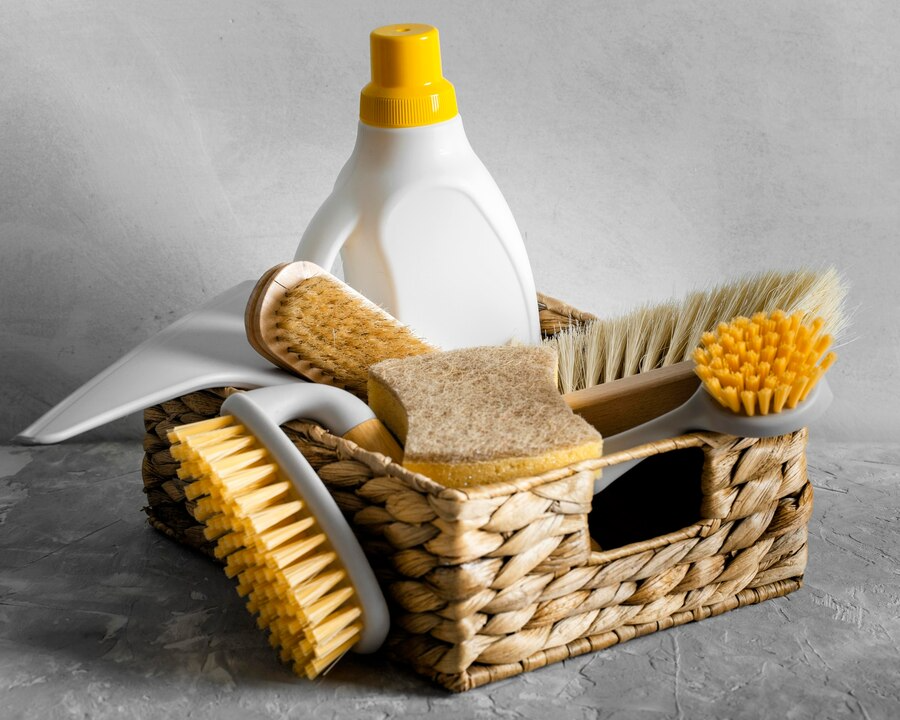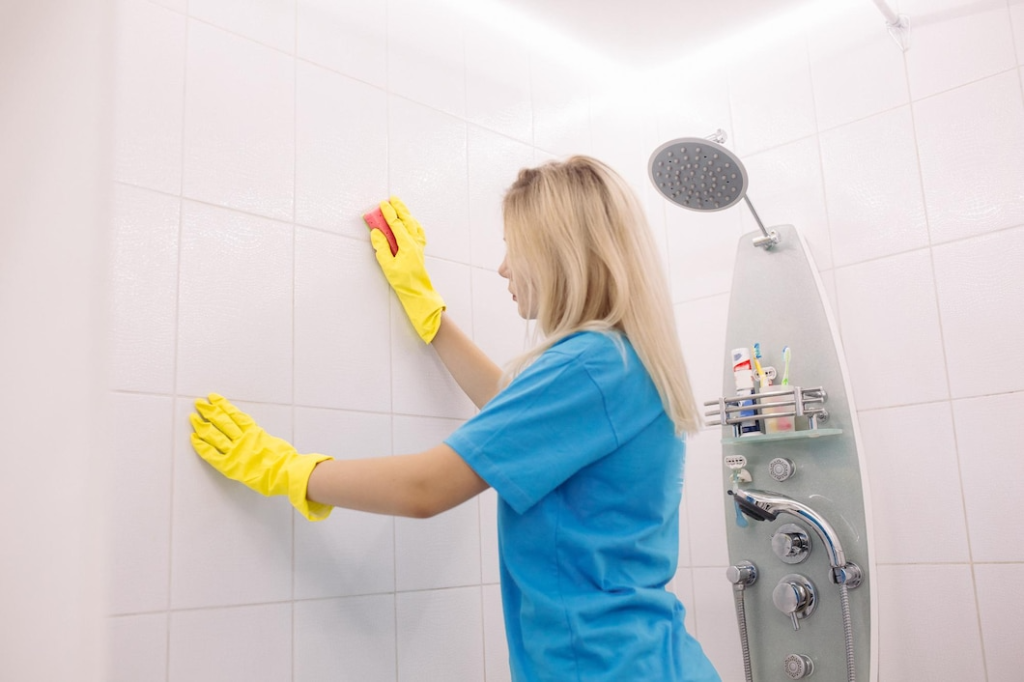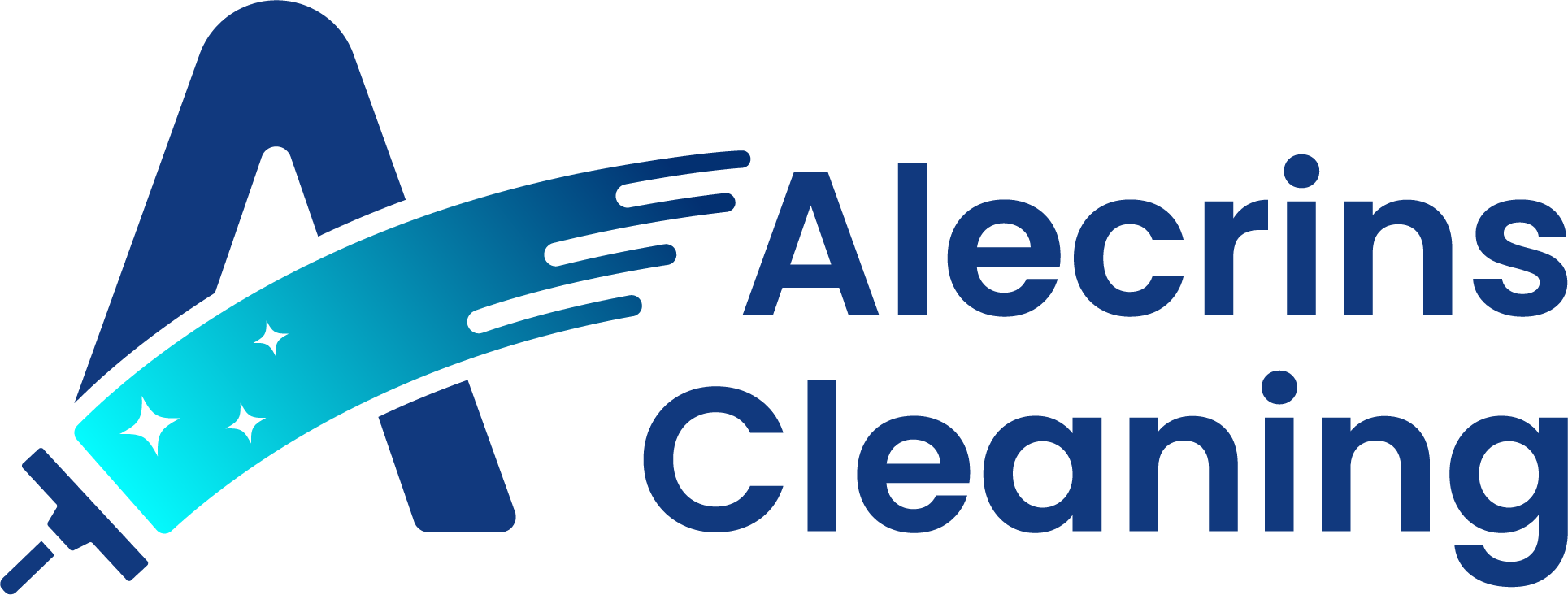Keeping your bathroom clean is essential for hygiene and maintaining the longevity of your fixtures. A fresh and tidy bathroom creates a welcoming environment, but achieving that cleanliness can seem daunting. However, you can keep your bathroom sparkling with minimal effort with the right approach.
This article explores essential bathroom cleaning tips, covering everything from tools and schedules to specific methods for mirrors, sinks, and toilets. By the end, you’ll comprehensively understand how to tackle every corner of your bathroom efficiently.
Tools for Efficient Cleaning
Having the right tools makes bathroom cleaning much more manageable. Start by gathering essentials like:
- Microfiber cloths
- A squeegee
- Scrub brushes (soft and stiff-bristled)
- A mop
- Eco-friendly cleaning sprays

Additionally, consider using natural alternatives like vinegar and baking soda for a more eco-friendly cleaning experience. These products are better for the environment and safe for your family, reducing exposure to harsh chemicals.
Bathroom Cleaning Schedule
A consistent cleaning routine will prevent grime buildup and make each task more manageable. Break down tasks into daily, weekly, and monthly schedules to ensure thorough cleanliness.
- Daily: Wipe down countertops, clean the sink, and remove visible water spots on mirrors.
- Weekly: Scrub the toilet, disinfect floors, and clean the shower or bathtub.
- Monthly: Clean grout lines, wash shower curtains, and deep clean fixtures.
A proper schedule will help you avoid last-minute scrubbing marathons and maintain a sparkling bathroom year-round.
Cleaning Bathroom Mirrors
Bathroom mirrors are often plagued by streaks and water spots, making them appear dull. Here’s how to clean them:
- Use a mixture of equal parts water and white vinegar.
- Spray the solution on the mirror and wipe it off with a microfiber cloth.
- Use a squeegee to remove any remaining moisture for a streak-free finish.
Common mistakes include using paper towels, which can leave lint, and cleaning the mirror without first dusting it off.
Sink and Countertop Cleaning
Sinks can accumulate toothpaste, soap, and grime, while countertops are prone to stains. Here’s how to keep them clean:
- Porcelain sinks: Use baking soda and a scrub brush to gently clean the surface without scratching it.
- Stainless steel sinks: Use a soft cloth with mild dish soap to remove water spots and shine the surface.
- Countertops: Disinfect with a gentle cleaner to remove germs while avoiding abrasive materials that may scratch delicate surfaces like marble.
Regular maintenance will prevent stubborn stains and keep your bathroom looking spotless.
Bathtub Cleaning Tips
Bathtubs can quickly accumulate soap scum and mildew. For a deep clean:
- Make a paste of baking soda and water for scrubbing.
- Apply vinegar for extra disinfecting power.
- Rinse thoroughly with warm water to remove any residue.
If you prefer natural solutions, lemon juice and salt are excellent alternatives for cleaning and brightening your bathtub surface.
Toilet Cleaning Guide

Cleaning the toilet may not be the most enjoyable task, but it’s crucial for bathroom hygiene. Follow these steps for a thorough clean:
- Pour toilet bowl cleaner around the inside rim of the toilet.
- Let the cleaner sit for a few minutes to break down stains.
- Scrub the bowl with a toilet brush, paying extra attention to under the rim.
Add a few drops of essential oil to the toilet tank to eliminate lingering odors for a fresh scent.
Showerhead Cleaning
Showerheads often develop limescale over time, which can reduce water flow. To clean them effectively:
- Fill a plastic bag with white vinegar.
- Secure the bag around the showerhead with a rubber band.
- Let it sit for a few hours before removing and scrubbing it with a brush.
This DIY method will restore your showerhead’s performance without harsh chemicals.
Grout and Tile Cleaning
Grout and tiles are magnets for mold and mildew, making them difficult to clean. To tackle this, use a grout cleaner or a mixture of baking soda and water. Scrub the grout lines with a stiff-bristled brush, then rinse the area thoroughly.
A bleach solution may be necessary for stubborn mildew, but always use it sparingly and ensure good ventilation.
Floor Cleaning Techniques
Bathroom floors come in various materials, each requiring specific care:
- Tile: Mop with a mild cleaner to prevent water spots and slippery surfaces.
- Vinyl: Clean with water and a gentle soap, avoiding excess moisture that can seep into seams.
- Stone: Use a pH-neutral cleaner to avoid damaging the natural surface.
Always dry the floor after cleaning to prevent slips and reduce mold growth in the grout lines.
Ventilation and Mold Prevention
Proper ventilation is critical to preventing mold in bathrooms. Keep the exhaust fan on during and after showers to remove excess moisture. For extra protection, spray a mixture of vinegar and water on tiles after each shower to prevent mold and mildew growth.
If your bathroom lacks proper ventilation, consider opening a window or using a portable fan to improve airflow.
Green Cleaning Methods
Natural cleaning products are a great way to protect the environment and your health. Vinegar, baking soda, and essential oils are potent cleaners that are safe and effective. Not only do they reduce the use of harmful chemicals, but they are also cost-effective and easy to find.
For tough stains, lemon juice can act as a natural bleach, while salt can be used as a mild abrasive cleaner.

Quick Cleaning Hacks
Pressed for time? Use these quick tips to maintain a clean bathroom between deep cleans:
- Wipe down the sink and faucet after brushing your teeth to prevent buildup.
- Use a squeegee on the shower walls to reduce water spots.
- Keep disinfecting wipes on hand to quickly clean countertops and door handles.
These small habits will keep your bathroom looking fresh with minimal effort.
Organizing the Bathroom
A clean bathroom is not just about scrubbing surfaces; it’s also about organization. Declutter countertops by storing items in cabinets or drawers, and use small toiletry baskets. Invest in over-the-door hooks or towel racks to maximize space.
Regularly decluttering will make cleaning tasks easier and keep your bathroom neat.
Common Bathroom Cleaning Mistakes
Many people unintentionally damage their bathroom fixtures by making these common cleaning mistakes:
- Using abrasive materials: Scrubbrushes or too harsh sponges can scratch surfaces.
- Neglecting ventilation: Skipping ventilation during cleaning can lead to mold growth.
- Not rinsing properly: Failing to rinse off cleaning products can leave a residue that attracts more dirt.
By avoiding these mistakes, you’ll ensure your bathroom remains in top condition for longer.
FAQs
1. What is the best way to clean a glass shower door?
Mix equal parts vinegar and water in a spray bottle, apply it to the door, and scrub with a non-abrasive sponge.
2. How often should you deep clean your bathroom?
Deep clean your bathroom at least once a month, focusing on grout, floors, and shower curtains.
3. How can I get rid of bathroom odors?
Ensure proper ventilation, clean the toilet regularly, and add essential oils to the toilet tank for a fresh scent.
